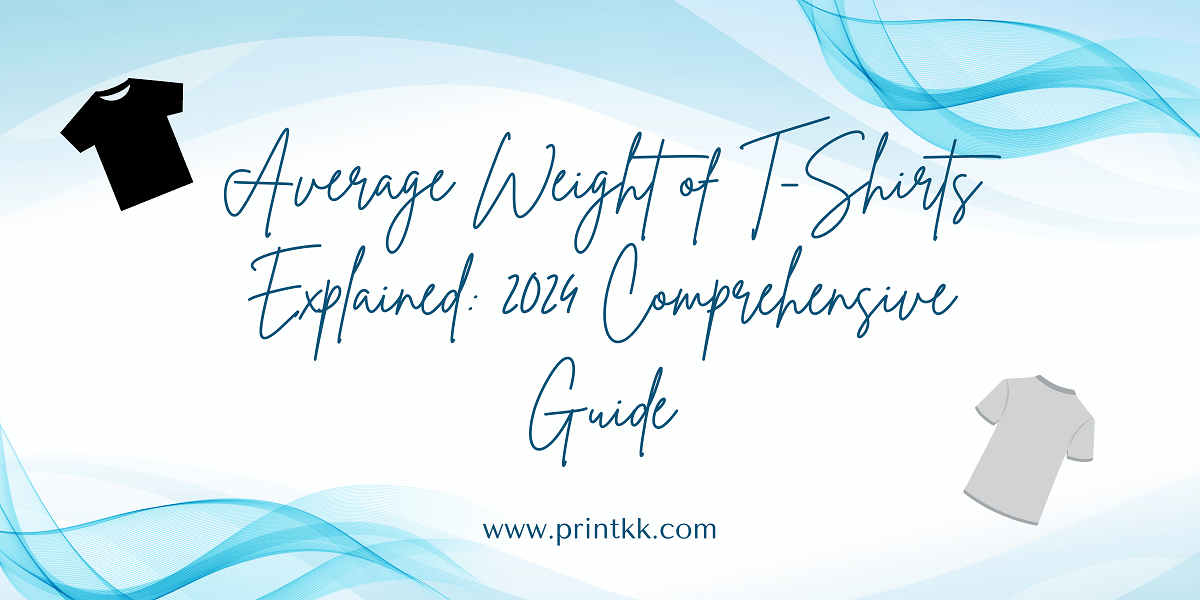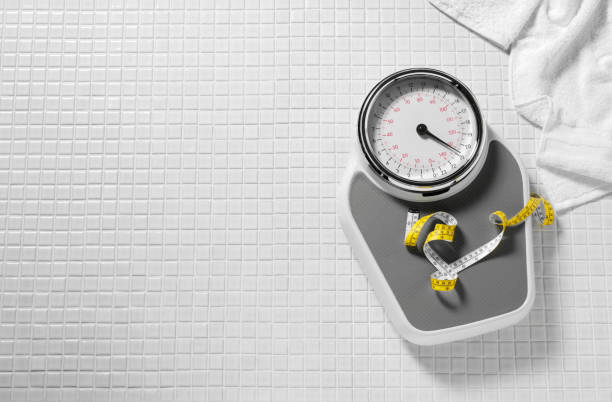
In 2025, the weight of a T-shirt goes beyond fabric heft, impacting quality, cost, and market success. This guide sheds light on its importance for designers, entrepreneurs, and buyers, providing insights to navigate the competitive landscape of print-on-demand fashion.
Of course, if you can't wait to learn about high-quality custom T-shirts, join PrintKK now and enjoy the personalized experience! Get our exclusive $5 coupon and save on your first order!

What Is T-Shirt Weight?

Understanding the weight of a t-shirt is crucial for a range of stakeholders in the print-on-demand (POD) industry, from entrepreneurs exploring new product lines to designers focusing on the perfect balance between comfort and durability. When we talk about t-shirt weight, we're referring to the fabric's density, usually measured in ounces per square yard (oz/yd²) or grams per square meter (gsm). This metric not only influences the feel and wearability of the t-shirt but also impacts printing outcomes, shipping costs, and even environmental considerations.
T-shirts typically range from lightweight, around 4 ounces (approximately 135 gsm), to heavyweight, upwards of 6 ounces (approximately 200 gsm). Lightweight t-shirts are favored for their breathability and comfort, making them ideal for casual wear or in warmer climates. On the other hand, heavyweight t-shirts offer more durability and opacity, which is particularly beneficial for premium brands, workwear, or for those seeking a more substantial feel. The choice of t-shirt weight affects not only the aesthetic and functional aspects of the final product but also the perception of quality and value by the end consumer. Therefore, understanding this facet of product creation is essential for making informed decisions that align with brand identity and customer expectations.
Why T-Shirt Weight Matters?

Understanding the significance of t-shirt weight is pivotal in the realm of print-on-demand services, fashion design, and apparel production. This aspect of clothing manufacture might seem minor at first glance, but its impact on functionality, comfort, and customer satisfaction cannot be overstated. Let's delve into why the weight of a t-shirt is a key consideration for entrepreneurs, designers, and brands alike.
T-shirt weight is typically measured in ounces per square yard (oz/yd²) or grams per square meter (g/m²), with the fabric's density determining its categorization as lightweight, standard, or heavyweight. Lightweight t-shirts, usually under 4 oz, offer breathability and ease, making them ideal for warm climates or active wear. Standard weight t-shirts, ranging from 4 to 6 oz, strike a balance between durability and comfort, suited for everyday use. Heavyweight t-shirts, exceeding 6 oz, are prized for their longevity and warmth, perfect for cooler conditions or premium quality demands.
The weight of a t-shirt affects not only the feel and comfort level for the wearer but also the printing quality and methods applicable for entrepreneurs and designers. Lighter fabrics are suitable for certain types of print-on-demand techniques that require a delicate touch, whereas heavier fabrics can support more robust printing methods, offering richer color saturation and durability. For businesses, choosing the right t-shirt weight can significantly influence brand perception, with heavyweight tees often associated with higher quality and durability, appealing to premium markets.
Moreover, understanding t-shirt weight is crucial for inventory planning and shipping logistics. Heavier t-shirts require more space and incur higher shipping costs, which can impact pricing strategies and profit margins. Entrepreneurs and small business owners must consider these factors when selecting products for their line, ensuring they align with their brand values, target audience preferences, and operational capacities.
A t-shirt design app can also be a valuable tool in this process, helping entrepreneurs create custom designs that complement the specific weight and fabric characteristics of their chosen shirts, enhancing the overall product offering.
In conclusion, the weight of a t-shirt goes beyond mere fabric thickness; it's a comprehensive factor that influences product selection, brand positioning, and customer satisfaction. Whether you're a budding entrepreneur, a seasoned designer, or a brand looking to expand your apparel offerings, paying attention to t-shirt weight can help you make informed decisions, cater to your audience's needs, and stand out in a competitive market.
Types of T-Shirts Based on Their Fabric Weight

In the diverse world of custom apparel, the fabric weight of T-shirts plays a critical role in defining their quality, comfort, and utility. T-shirt weight, measured in ounces per square yard, influences everything from the garment's feel and durability to its appropriateness for certain climates or occasions. Understanding the types of T-shirts based on their fabric weight is essential for entrepreneurs, designers, and brands aiming to make informed choices in their print-on-demand ventures.
Heavyweight T-Shirts
Heavyweight T-shirts, with fabric weights exceeding 6 ounces, are the epitome of durability and structure. Their thick fabric not only offers superior durability but also a premium feel, making them ideal for cooler temperatures and rugged use.
- Highly valued for their longevity, making them a preferred choice for workwear in demanding environments
- Offer a premium look and feel, often sought after for high-quality branded merchandise
- Provide better opacity, making them suitable for vibrant and intricate designs without the risk of show-through
Mediumweight T-Shirts
Weighing in at 4.5 to 5.5 ounces, midweight T-shirts strike a balance between durability and comfort. They are versatile enough for year-round wear, providing a standard level of thickness that suits a wide range of activities and occasions.
- The go-to choice for everyday apparel, offering a good mix of comfort and durability
- Suitable for both screen printing and direct-to-garment printing, making them a popular choice for custom designs
- Preferred by brands and businesses for employee uniforms or merchandise due to their all-season suitability
Lightweight T-Shirts
These T-shirts typically weigh between 3.5 to 4.3 ounces. Their light fabric makes them an excellent choice for hot weather or as a base layer under other garments. They're known for their softness and breathability, appealing to those seeking comfort without the bulk.
- Ideal for promotional events in warm climates
- Perfect as workout gear due to their breathability and moisture-wicking capabilities
- Favored for casual wear, offering a relaxed and comfortable fit
Factors Affect T-Shirt Weight
The weight of a T-shirt, an essential factor in determining its quality and suitability for various purposes, is influenced by several key elements. Understanding these factors is crucial for entrepreneurs, designers, and businesses in the print-on-demand industry, as it affects the choice of materials and the final product's appeal to the target audience.
- Fabric Type
Different fabrics have inherent weights, affecting the overall weight of the T-shirt. Cotton, for example, is known for its comfort and breathability but can vary in weight depending on its weave and the type of cotton used.
- Fabric Blend
Blends of materials, such as cotton-polyester, can alter the weight and feel of a T-shirt. These blends often aim to combine the best qualities of each fabric, like durability and ease of care, while balancing weight for optimal comfort and function.
- Weave Density
The density of the fabric's weave directly impacts its weight. A tighter weave generally results in a heavier T-shirt, offering more durability and less transparency, while a looser weave makes for a lighter and more breathable garment.
- Thread Count
The count of threads per square inch in the fabric can also affect the T-shirt's weight. Higher thread counts usually mean a finer and denser fabric, contributing to a heavier garment.
- Pre-treatment and Finishing Processes
Various treatments and finishes applied to T-shirts, such as pre-shrinking, dyeing, or adding water-resistant coatings, can add to the fabric's weight. Each process contributes to the final feel and weight of the shirt, influencing its suitability for different markets or uses.
By considering these factors, those involved in creating and selling T-shirts can make informed decisions about fabric selection and design, ensuring their products meet the expectations and preferences of their target audience.
How Much Does an Average T-Shirt Weigh?
Determining the average weight of a T-shirt is essential for those in the print-on-demand sector, as it impacts shipping costs, material choice, and customer satisfaction. The weight of a T-shirt can vary based on several factors, including the fabric type, size, and the presence of any additional embellishments or designs. Understanding these nuances can help entrepreneurs and designers make informed decisions that align with their brand and customer expectations.
- Fabric Type
The material of the T-shirt plays a significant role in its weight. For instance, a 100% cotton T-shirt generally weighs more than a blend of cotton and synthetic fibers due to the density and natural properties of cotton.
- T-Shirt Size
Size directly affects the weight of a T-shirt. Larger sizes, such as XL and XXL, use more material than smaller sizes like S and M, resulting in a heavier garment.
- Fabric Thickness
The thickness of the fabric, often measured in ounces per square yard, also determines the weight of a T-shirt. Lightweight T-shirts might weigh between 3.5 to 4.3 ounces, while heavier duty shirts could weigh 6 ounces or more.
- Additional Features
Features such as double stitching, reinforced shoulders, or additional layers for graphic tees can add to the overall weight of a T-shirt. These enhancements contribute to durability but also increase the weight.
What Is a Good Weight for T-Shirts?
Identifying the ideal weight for T-shirts is a key consideration for anyone in the print-on-demand business, as it affects not only the comfort and durability of the garment but also its suitability for various uses and climates. The "good" weight for a T-shirt can vary depending on its intended use, target market, and printing requirements. Understanding these variations can help entrepreneurs and designers select the best options for their specific needs.
- Lightweight T-Shirts (3.5 to 4.3 ounces)
Preferred for hot weather or athletic wear due to their breathability
Suitable for layering without adding bulk
- Midweight T-Shirts (4.5 to 5.5 ounces)
Ideal for everyday wear, providing a balance of comfort and durability
Versatile for both casual and promotional use
- Heavyweight T-Shirts (6 ounces and up)
Best for cooler climates or as workwear due to their thickness and durability
Offers a premium feel, ideal for high-quality branding
Choosing the right T-shirt weight involves considering the garment's purpose, the preferences of the target audience, and the specifics of the design to be printed. Lightweight T-shirts are often favored for their softness and comfort in warm conditions, midweight shirts are appreciated for their versatility and all-year-round appropriateness, and heavyweight T-shirts are valued for their durability and premium quality. By selecting the appropriate weight, print-on-demand businesses can ensure their products meet the expectations of their customers and stand out in the competitive market.
How to Measure Fabric Weight?
Measuring fabric weight is a crucial step in the production and selection of T-shirts for entrepreneurs, designers, and businesses in the print-on-demand industry. It ensures that the chosen material meets the desired quality and performance standards for the final product. Fabric weight, typically expressed in ounces per square yard or grams per square meter, provides insight into the fabric's thickness, density, and overall feel. Understanding how to accurately measure fabric weight can help in making informed decisions about material selection and product design.
- Use a Fabric Scale
Precision scales designed for fabric can measure small samples accurately, providing a weight in ounces or grams.
- Calculate the Weight per Square Yard or Meter
Measure a one-yard or one-meter square piece of fabric, weigh it, and use the measurement as the standard fabric weight.
- Consult Manufacturer Specifications
Fabric weights are often listed in the specifications provided by textile manufacturers, offering a reliable source of information.
- Utilize a GSM Cutter
A GSM (grams per square meter) cutter precisely cuts a small, specific area of fabric to be weighed, ideal for international standard measurements.
By employing these methods, those involved in creating and selecting T-shirts can ensure the fabric chosen aligns with their brand's quality standards and customer expectations. This step is fundamental in achieving desired outcomes in terms of comfort, durability, and overall product satisfaction.
How to Choose the Right T-Shirt Weight for Your Project?
Selecting the appropriate T-shirt weight for your project is crucial for ensuring the final product meets your expectations in terms of quality, durability, and comfort. Whether you're an entrepreneur, a designer, or a business owner in the print-on-demand industry, understanding how to choose the right T-shirt weight can significantly impact your brand's success and customer satisfaction. Here are some key considerations to guide your selection process:
- Identify the Purpose of the T-Shirt
Determine whether the T-shirt will be used for casual wear, athletic purposes, promotional events, or as workwear. The intended use will heavily influence the ideal weight.
- Consider the Target Audience
Think about the preferences and needs of your audience, including factors like climate, activity level, and fashion trends, to choose a weight that will appeal to them.
- Evaluate the Printing Method
Different printing techniques may work better with certain fabric weights. For example, heavier weights might be more suitable for high-quality screen printing, while lighter weights could be better for direct-to-garment printing.
- Factor in Seasonality
Heavier fabrics might be more appropriate for cooler seasons, while lighter weights are ideal for summer or warmer climates.
- Balance Quality and Cost
Higher fabric weights often indicate better quality and durability but also come with a higher price tag. Consider your budget and how the T-shirt's weight will affect the overall cost.
By carefully considering these factors, you can choose the right T-shirt weight that aligns with the goals of your project, meets the needs of your target audience, and enhances the overall value of your product.
Start Your T-Shirt Business with PrintKK POD
Launching a T-shirt business has never been more accessible thanks to platforms like PrintKK, a leading print-on-demand dropshipping company. With its expansive selection of customizable products and a user-friendly system, PrintKK empowers entrepreneurs, designers, and businesses to create and sell custom T-shirts without the need for upfront inventory investments. Here's how you can start your T-shirt business with PrintKK:
- Wide Range of Customizable Products

Custom Heavy Cotton T Shirts for Men (Single Sided Design) - Print on Demand Fulfillment - PrintKK
PrintKK offers over 900 customizable products, allowing for a vast array of creative expressions beyond T-shirts, including home decor and accessories. This diversity enables businesses to cater to a wide audience with varied interests and preferences.
- User-Friendly Platform
The platform's intuitive interface combined with advanced printing technology simplifies the process of designing and selling custom products. Even those with no prior experience in print-on-demand can easily navigate through the platform, design products, and set up a store.
- No Upfront Investment Required
With PrintKK, you can start your T-shirt business without any initial financial investment. The print-on-demand model means products are only printed when an order is placed, eliminating the need for inventory and significantly reducing the risk for new entrepreneurs.
By leveraging PrintKK's comprehensive services and support, starting a T-shirt business is both feasible and profitable. Whether you're an artist looking to share your designs with the world or an entrepreneur aiming to build an eCommerce brand, PrintKK offers the tools and flexibility needed to bring your vision to life.

Conclusion
In summary, understanding the average weight of T-shirts is essential for anyone in the print-on-demand industry, from entrepreneurs to designers. It influences not only the comfort and durability of the apparel but also the printing quality and shipping costs. By considering factors such as fabric type, target audience, and intended use, businesses can select the optimal T-shirt weight, ensuring their products meet customer expectations and stand out in a competitive market.
FAQs
What is the average weight of a man's shirt?
The average weight of a man's T-shirt typically ranges from 5 to 6 ounces, depending on the fabric and size. This standard ensures a balance between comfort and durability for everyday wear.
How heavy is a 100% cotton shirt?
A 100% cotton shirt typically weighs between 4.5 to 6 ounces, with variations based on size and the cotton's weave. This weight range ensures both comfort and quality.
Is 6 oz a heavy t-shirt?
Yes, a 6 oz T-shirt is considered heavyweight, offering greater durability and a thicker feel, ideal for cooler weather and premium quality demands.
How many oz is a good t-shirt?
A good T-shirt typically ranges from 4.5 to 6 oz, balancing comfort, durability, and versatility for most climates and occasions.










 Global Shipping
Global Shipping


 Made in USA
Made in USA


























